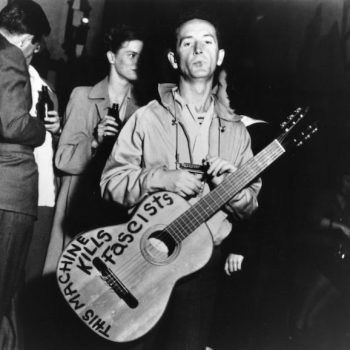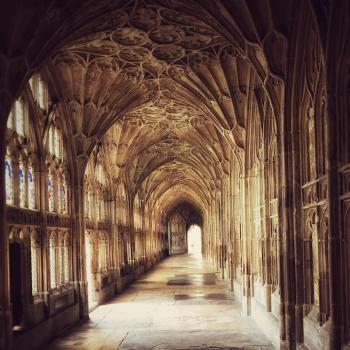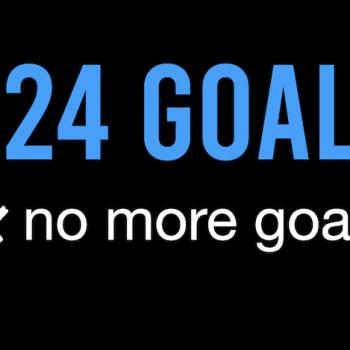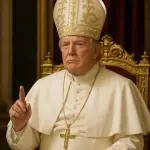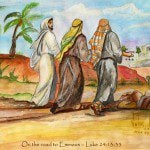On New Year’s Eve – Cee Lo Green stepped in it. The Rolling Stone headline read: “Cee Lo Green Outrages John Lennon Fans by Changing Lyrics to ‘Imagine.’” The controversy could shed new light on a great old song.
THE SONG: I’ve always loved the song Imagine. For one thing, I grew up on the piano. I’ve played well over 1500 gigs now with an acoustic or electric guitar in my hands, but piano still feels like home. Great piano songs in pop music are hard to find, and Lennon & McCartney wrote their fair share: Hey Jude, Let it Be, Life Goes On, My Life, and the immortal Imagine. It was always nice to have something good to pound out besides Van Halen’s Jump, or She’s a Little Runaway (yeah that’s a Bon Jovi reference twice in one week). The song itself is simply brilliant: the piano part is whimsical, the melody beautiful – sad but w/a tinge of hope – then there’s that thing where Lennon jumps up into his head voice – it’s a career song. I’d give anything to have written it.
THE CONTROVERSY: On the New Year’s Eve broadcast from Times Square, Cee Lo Green performed Imagine in a soulful, albeit lack-luster version that was unremarkable in every way except one – he change the words. Lennon’s version was “nothing to kill or die for / and no religion too.” Green’s version? “Nothing to kill or die for / and all religion’s true.” (An interesting stake in the ground for somebody whose big hit is the song “F*#! You!) Lennon fans were not amused, and Green’s been taking a beating. Granted some John Lennon fans are rabid. You should not provoke them, and here they have a reasonable objection. There are specifics to John Lennon’s imagined future, and he was convinced that religion did a lot of harm. Green’s minor lyrical adjustment does change the whole point of the song.
MY TAKE: For one thing, it is art and Cee Lo Green can do whatever he wants to do. You can love it or hate it, but you can’t withhold his right to do whatever he wants with whatever song he wants. Art is free like that, and it’s important for it to remain so.
However, I think perhaps we’ve missed the deeper meaning of the lyric. Truth be told, the line “no religion too,” always bothered me – the whole first verse has. I just don’t share the assumption that religion causes all of the problems in the world. The myth of religious violence is a pervasive thing. It holds that the creation of the nation state was necessary to keep all the crazy religious types from killing each other. It’s taught in every Political Science department at universities, but if you consult the History departments at those same schools, they’ll tell you that it is absolutely not true. It’s just revisionist history. Nations are much more violent than religions, and much of the violence perpetrated by governments and political rulers has been pawned off on religion. From that point of view it’s a lie to say religion is part of the problem and Lennon’s song perpetuates the myth. The abuse of religion, however, is a huge problem, and this is what I think Lennon was talking about.
We can’t forget that Lennon was deeply spiritual and, in a sense, a very religious person. In Imagine, I think he is writing about something a little more nuanced. Could it be he was saying, “let’s get beyond religiosity.” Peter Rollins is working with this same idea. Rollins says that Christianity is not meant to have all of the answers about life, it is meant to bring life. Brilliant… He notes in an interview:
“One of the most interesting things about Christianity is that Christ both founded a religion and yet signaled the end of all religions. Jesus said there will come a time when we worship in spirit and in truth rather than on one mountain or another….Christ thus can be seen as founding an irreligious religion, i.e., a religion that critiques the idea of religion, a religion without religion.”
In the end, I say: good art is not prescriptive, it’s provocation. You don’t have to agree with Lennon or Cee Lo in order for their art to do what it is supposed to do to you. If you sing “Imagine there’s no heaven,” with John Lennon, maybe it can come to mean something different for you, like the rejection of the folk-theologies of heaven and hell that are used to control people, or of Platonic dualism and a privatized Christianity trained only on getting into heaven when you die.
Whatever you think – I have one suggestion. If you have a few moments… watch this. It’s good for your soul! Especially the part at about 2:45 where Yoko looks completely baked…







